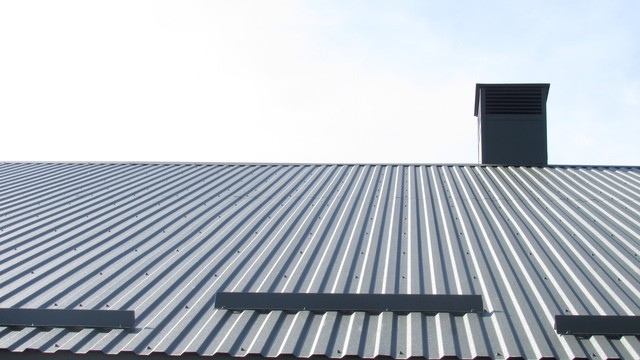Thinking about upgrading your roof and wondering how much a metal roof costs? You’re not alone. Metal roofs are becoming increasingly popular for homeowners and business owners alike due to their durability, energy efficiency, and modern look. But before diving into a metal roofing project, it’s important to understand the various factors that can influence the total cost. Let’s break down the real numbers behind metal roof cost, what drives prices up (or down), and how to plan your budget effectively.
Why Choose a Metal Roof?
Before we jump into pricing, here’s why metal roofs are worth considering:
- Long-lasting (can last 40 to 70 years)
- Low maintenance compared to traditional shingles
- Energy efficient (helps reduce cooling bills)
- Modern and attractive appearance
- Made from recyclable materials, making them eco-friendly
Now, let’s talk about how much it costs.
Average Cost of a Metal Roof in Orlando, FL
In the Orlando, FL area, the anticipated cost of installing a new metal roof typically falls between $12,000 and $40,000. This range is influenced by several local and project-specific factors, including your roof’s total square footage, its design complexity (like pitch and number of valleys/dormers), the specific type of metal chosen (e.g., steel, aluminum, copper), and prevailing local labor rates. On a per-square-foot basis, this generally works out to approximately $9 to $20 installed.
Within Orlando, budget-friendlier materials like painted Galvalume steel or aluminum will keep costs towards the lower end of this spectrum. Premium choices, such as copper or zinc, will significantly increase the overall price. Importantly, Florida’s building codes, especially regarding hurricane resistance and high wind speeds, can necessitate specific installation techniques or system upgrades, potentially adding to the cost compared to regions with less stringent requirements.
Despite a higher initial investment compared to common asphalt shingles, a metal roof in Orlando offers substantial long-term value. Key benefits include enhanced durability against Florida’s intense sun and storms, significant potential for energy savings due to metal’s reflective properties (reducing air conditioning load), and minimal maintenance requirements over its extended lifespan.
Disclaimer: These figures are estimates based on typical market conditions in Orlando as of early 2025. For an accurate price, obtain detailed quotes from several licensed and insured local roofing contractors based on your specific home.
Average Cost of a Metal Roof – USA National Average
Across the United States, the average cost for a professionally installed metal roof generally ranges from $8,000 to $30,000. This national average reflects a wide variety of regional markets, material choices, and project sizes. Broken down further, the cost typically lands between $8 and $16 per square foot installed.
Key factors driving this cost nationwide include:
- Roof Size and Complexity: Larger or more intricate roofs naturally cost more.
- Metal Type: Standard options like steel and aluminum are more affordable than premium metals like copper, zinc, or titanium.
- Installation Complexity: Steep pitches, numerous penetrations (vents, chimneys), and the need for structural reinforcement add to labor costs.
- Geographic Location: Labor rates, material availability, local building codes, and regional climate considerations (snow load, wind zones) cause significant price variations from one area to another.
Similar to specific locations, budget-friendly aluminum and steel options anchor the lower end of the price range nationally, while high-end metals like copper and zinc represent the premium tier.
While the upfront metal roof cost is notably higher than asphalt shingles virtually everywhere in the US, the investment often pays off over time. Metal roofs boast superior longevity (often 50+ years), excellent weather resistance, the potential for reduced energy bills through reflective coatings (“cool roofs”), and lower long-term maintenance needs, making them a cost-effective choice over the full life cycle of the roof.
Disclaimer: This national range is a broad average as of early 2025. Costs in your specific location could be significantly higher or lower. Always consult with local contractors for precise quotes tailored to your home and region.
Key Factors That Affect the Cost of a Metal Roof
Several variables can influence how much you’ll end up paying. Here’s what to look out for:
1. Type of Metal
Different metals come at different price points:
- Aluminum is lightweight, rust-resistant, and great for coastal areas.
- Steel is sturdy and affordable.
- Copper is premium, beautiful, and expensive.
- Zinc is durable and long-lasting but also on the higher end of the price range.
2. Roof Complexity
A basic, straightforward roof will cost less than one with dormers, chimneys, skylights, or steep slopes. The more complicated the design, the more labor and materials it requires.
3. Roof Size
Larger roofs need more materials and labor. Bigger square footage means a higher total cost.
4. Underlayment and Insulation
Upgrades like high-quality underlayment or additional insulation can increase costs but improve energy efficiency and roof performance.
5. Labor Costs
Installation rates vary by region and experience. Certified and insured professionals may charge more, but they often deliver better results that last longer.
Need reliable installation? Check out our Metal Roof Installation services here.
6. Coatings and Finishes
Protective coatings that enhance UV resistance or prevent rust can extend the life of your roof—but they also add to the overall cost of a metal roof.
Is a Metal Roof Worth It?
Let’s look at some pros and cons.
Pros:
- Long life expectancy
- Energy savings from better insulation
- Little to no maintenance is required
- Boosts property value
- Modern, sleek curb appeal
Cons:
- Higher upfront metal roof cost
- Potential noise during rain (can be reduced with insulation)
- Not ideal for DIY installation
Tips to Reduce Your Metal Roof Cost
- Get multiple quotes from reputable contractors
- Go for standard styles over custom colors or finishes
- Choose a simple roof design
- Schedule Roof installation during off-peak seasons
- Take care of your roof to avoid future repair costs
Final Thoughts: How Much Should You Budget?
So, how much does a metal roof cost? The answer depends on your unique situation—roof size, material, and design complexity all play a role. But one thing’s for sure: while the cost of a metal roof is higher upfront, the long-term benefits make it a solid investment. Whether you’re replacing an old roof or building a new home, it’s smart to weigh short-term expenses against long-term savings.
Ready to Upgrade Your Roof?
Still curious about the cost of a metal roof or want a personalized quote? Reach out today for expert advice and transparent pricing. Don’t forget to share this post with a friend who’s planning a roofing project—or drop your questions in the comments below. We’re here to help!
FAQs About Metal Roof Cost
1. How much does a metal roof cost on average?
The average cost of a metal roof ranges from $8,000 to $30,000, depending on factors like roof size, material type, and complexity. This translates to around $8–$16 per square foot installed.
2. What factors affect the cost of a metal roof?
Key factors that influence metal roof cost include the type of metal used (aluminum, steel, copper, or zinc), roof complexity, square footage, labor rates, coatings, and underlayment options.
3. Is a metal roof more expensive than shingles?
Yes, metal roofs typically have a higher upfront cost than asphalt shingles. However, they last longer, require less maintenance, and can save money on energy bills over time.
4. Are metal roofs worth the investment?
Absolutely. While the initial cost of a metal roof may be higher, the long lifespan, energy efficiency, and low maintenance make it a smart long-term investment for many homeowners.
5. How can I reduce the cost of installing a metal roof?
To lower your metal roofing costs, consider choosing standard materials, simplifying your roof design, comparing multiple contractor quotes, and scheduling your project during the off-season.

